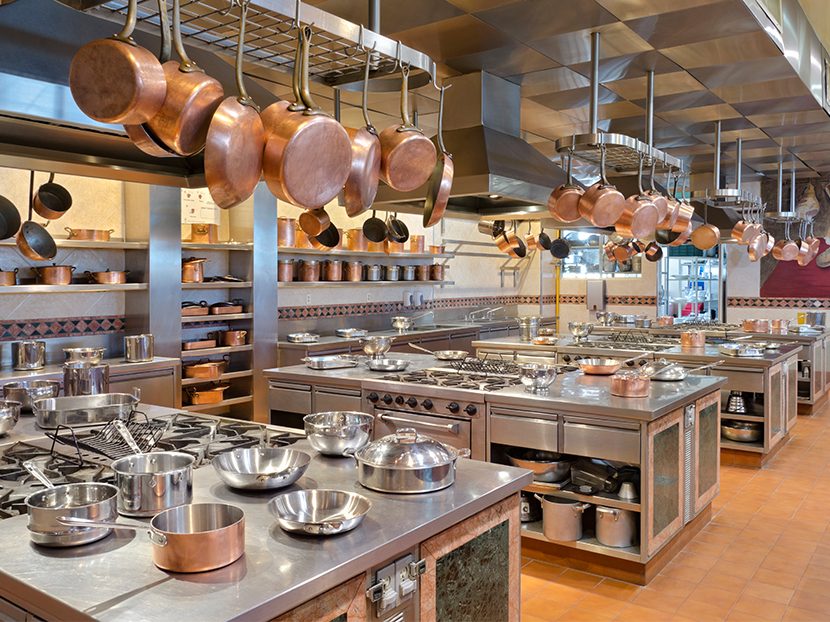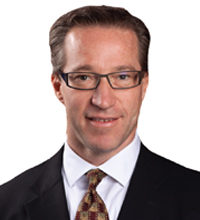Commercial Kitchen Design
A battle between agencies.

Most of us in this industry with a reasonable amount of experience have had the opportunity to design a commercial kitchen here and there. If so, you are probably aware that the process usually goes something like this:
First, the architect will work with the kitchen consultant on the general layout of the kitchen space. As the program unfolds and the details of the layout are developed, feedback will be sought from the MEP trades.
Our HVAC friends will provide information about the kitchen exhaust requirements based on the size of the hoods served. This is often one of the largest hurdles to cross since the ductwork is large black iron in a fire-rated shaft that must slope to prevent grease from collecting at low points. If low points cannot be avoided, then grease sumps are required to trap and drain the grease in a controlled and safe fashion. The exhaust is supposed to travel to the roof. If this is impossible, such as in an existing high-rise building, then a Pollution Control Unit (PCU) is required to remove the grease from the exhaust. These are large units that require lots of hot water and drainage.
Exhaust hoods and their ductwork vary greatly in design. Some hoods have cold water mist systems (and associated drainage) to remove the grease from the exhaust, others do not. Some have hot water wash systems (and associated drainage), while others do not. Some have dry chemical fire suppression, and some have wet chemical. Regardless of the type of system, it has to be interfaced with an emergency gas shut-off valve (by others) to shut off the flow of gas to the equipment served by the hood in the event of a fire.
While all of these details are being resolved, the electrician will have to locate the electrical panels serving the kitchen. Be sure not to run piping above these panels since that is a violation of the electrical code.
The next evolution of the design by the kitchen equipment consultant (KEC) is the spot connection plans. These are drawings for the MEP trades that show where utility connections are required from each discipline. The plumbing spot connection plan will show all the points for cold and hot water, indirect waste, hard connected waste, gas and floor sinks. Note that the KEC will not show general area floor drains; this is usually left to the discretion of the architect. However, be sure that the architect doesn’t go overboard. Floor drains are not free, and they should only be provided where they are truly functional.
There are two regular debates that occur between the KEC and the plumbing engineer. The first is the provision of 140 F hot water; the KEC will make this request every time. However, the only thing that typically requires 140 F hot water is the booster heater for the dishwasher. The KEC will routinely size the dishwasher booster to increase the water temperature from 140 F to 180 F. Since the dishwasher is typically the only item in the kitchen requiring greater than 120 F water, it makes more sense to size the water heaters for 120 F and have the KEC size the booster heater for 120 F to 180 F. This simplifies the hot water system a great deal.
The exception to this is if the kitchen hood has a 140 F wash down (or the PCU for that matter). In that case, the hot water system will need to be designed for 140 F, and the temperature blended down to 120 F for all the hand and pot washing fixtures. Don’t run 140 F hot water to fixtures where staff will place their hands; it represents a scalding hazard. If your project has both a hot water hood wash and a PCU, the heater(s) do not need to be sized for both loads as the PCU operates during cooking while the hood wash operates during cleaning.
The second area of debate between the KEC and the plumbing engineer is the drainage of pot sinks, at least in areas under the Uniform Plumbing Code (UPC). The UPC specifically says that such sinks should be hard piped to the grease waste system with a floor drain connected immediately downstream. The KEC will typically show these sinks with an indirect waste because of the health code, but, in this case, the UPC will trump the health code, and the fixture should be hard piped. The plumbing inspector will win every time on this one.
Another area of conflict between the plumbing code and the health department is the temperature of hot water. The code limits hot water to a temperature of 120 F maximum, while the health department wants a minimum of 120 F. This means that to satisfy both agencies, the hot water has to be exactly 120 F. However, despite this conflict, I have not known of any hot debates between the two agencies, as long as the design temperature is 120 F give or take a reasonable number of degrees, but you never know.
Yet another area of design contention, that varies from jurisdiction to jurisdiction, is which fixtures to take to the grease interceptor. If your project is in Los Angeles City, for example, the industrial waste department will require all the fixtures in the kitchen to go to the grease interceptor, even mop sinks and ice machine trenches (but not toilet rooms, of course). In Los Angeles County, in contrast, only grease-laden fixtures are allowed to go to the grease interceptor, so you end up with a lot of parallel waste piping.
Lastly, a note on hot water heaters: Natural gas is typically more economical for generating hot water than electricity, but keep in mind that gas water heaters require flues. If a flue can be provided without difficulty, then gas is usually the energy source of choice (unless boiler water is available from the HHW system). If a flue is not practical, then electricity can be used, but keep in mind that when using electricity, you should use more storage and less energy (kW). For gas heaters, the reverse is generally the case — storage can be kept to a minimum while the energy (BTUs) can be increased.
There is a balancing act required when selecting water heaters, gas or electric. The bottom line is that your storage plus recovery has to meet your hourly demand load. As an example, for a kitchen with a demand of 280 GPH, you could use either an 80-gallon gas heater with 120,000 BTU/h, or a 120-gallon electric heater with 24 kW (based on a 60 F inlet temperature). Perhaps I will elaborate on that in coming months depending on the feedback I receive.





